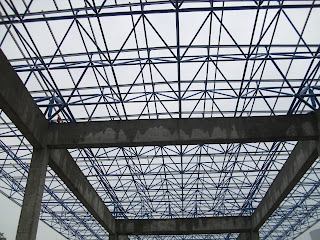What's the difference between PC resistant panels and insulating laminated glass in terms of architectural applications?
 |
| PC resistant |
There are several differences between PC-resistant panels and insulating laminated glass for architectural applications. Here are some of the main differences:
Material properties: The PC endurance panel is a plastic material while insulating laminated glass consists of PVB film sandwiched between two or more layers of glass. Therefore, there are differences in their physical properties, chemical properties, and mechanical properties.
Light Transmission Performance: Both PC Ripstop and insulating laminated glass have high light transmission performance, but the light transmission of PC Ripstop is higher, which can reach more than 90%, while the light transmission of insulating laminated glass is generally around 80%. Therefore, in architectural design, if higher light transmission is required, PC laminate may be more suitable.
Acoustic performance: Hollow laminated glass has good acoustic performance and can effectively isolate external noise, while the acoustic performance of the PC board is relatively poor. Therefore, insulating laminated glass may be preferred in buildings that require higher sound insulation performance.
Safety: PC Ripstop has high impact resistance and is not easy to break, and even if it breaks, it will not form sharp fragments like glass, so it is safer. If hollow laminated glass the broken, due to the bonding effect of PVB film, the fragments will be bonded together, will not be scattered to hurt people, and also have a certain degree of safety. However, in comparison, the safety of PC resistant board is higher.
Scope of application: Due to the differences in the nature and performance of the materials, the scope of application of PC board and insulating laminated glass is also different. The PC board is more suitable for occasions that require high light transmittance, impact resistance, and lightness, such as light roofs, canopies, billboards, etc. Insulating laminated glass is more suitable for occasions that require high light transmittance, impact resistance, and lightness. Hollow laminated glass is more suitable for occasions that need high sound insulation performance, heat preservation performance, and safety, such as building windows, curtain walls, soundproof walls, and so on.
To summarize, PC-resistant board and hollow laminated glass have their own advantages and disadvantages in terms of architectural applications, the specific use of which material depends on the specific application needs and scenarios.




评论
发表评论